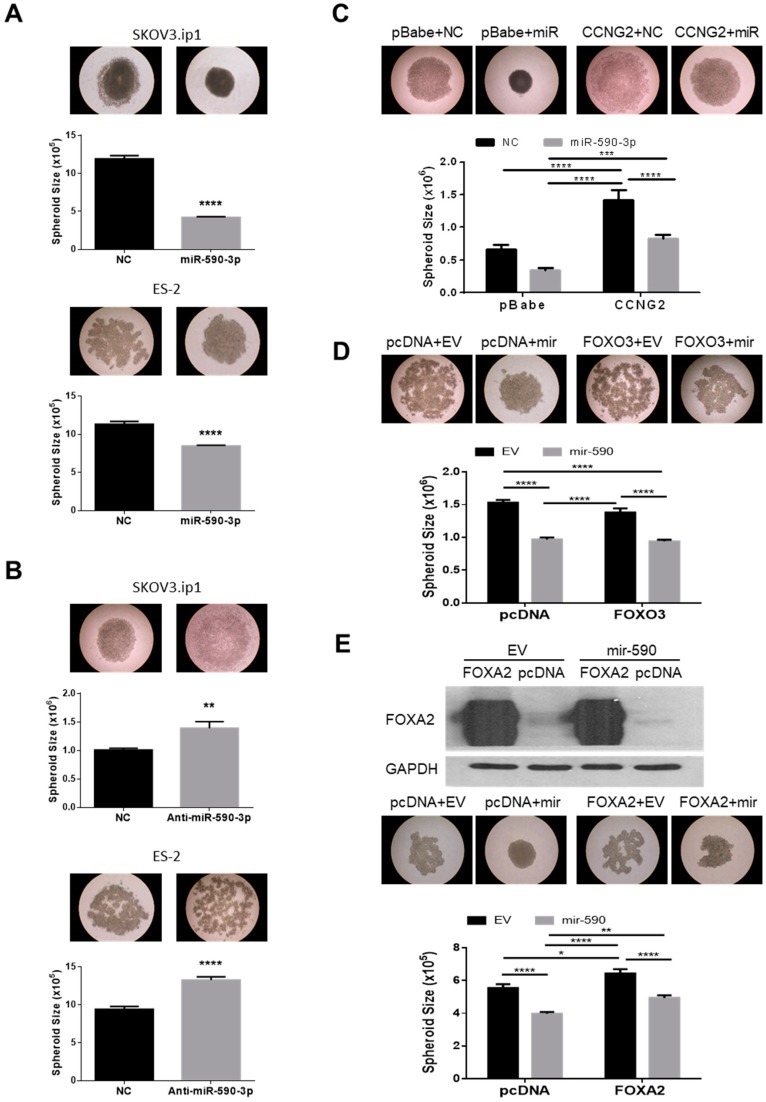Figure 5.
miR-590-3p promoted the formation of compact spheroids. (A) The overexpression of miR-590-3p induced compact spheroid formation in hanging drop culture. Transient transfection of miR-590-3p into both SKOV3.ip1 (top) and ES-2 (bottom) cells resulted in the formation of tight, compact, and smaller spheroids when compared to the non-targeting control (NC) (n = 12–21). (B) Inhibition of miR-590-3p blocked compact spheroid formation. Transient transfection of anti-miR-590-3p disrupted the formation of compact spheroids (n = 18–21). (C) Overexpression of CCNG2 reversed the effect of miR-590-3p in spheroid formation. Control or CCNG2 stable SKOV3.ip1 cells were transiently transfected with either miR-590-3p or NC, and hanging drop cultures were performed. In control cells, miR-590-3p overexpression resulted in the formation of compact spheroids. CCNG2 stable cells formed loose spheroids and reduced the effect of miR-590-3p on spheroid formation (n = 12–15). (D) Control and mir-590 stable ES-2 cells were transiently transfected with either FOXO3 or its empty vector, pcDNA3. FOXO3 overexpression partially inhibited the ability of mir-590 to form the compact spheroids, but had no effect on the size of the spheroids (n = 16–20). (E) FOXA2 reduced the effect of mir-590 on spheroid formation. Transfection of FOXA2 into control and mir-590-overexpressing SKOV3.ip1 resulted in the formation of larger and less compact spheroids (bottom) (n = 16–20). Overexpression of FOXA2 after transfection was confirmed by Western blotting (top). Data represent the mean ± SEM. Statistical analyses were performed using t-test (A and B), or two-way ANOVA/Student–Newman–Keuls test. * p < 0.05, ** p < 0.01, *** p < 0.001, **** p < 0.0001.

